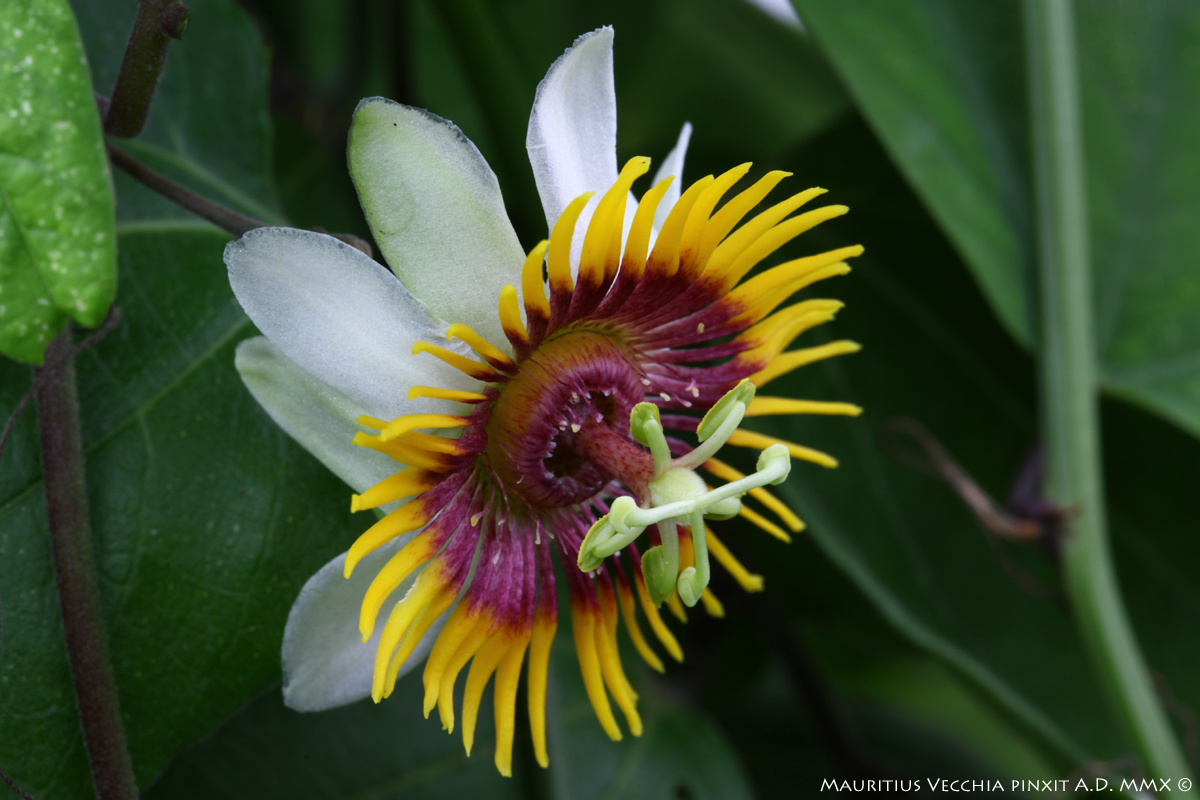
SUBGENUS: decaloba
SUPERSECTION: multiflora
GEOGRAPHICAL DISTRIBUTION OR ORIGIN:
From Mexico to Honduras, Cuba, Colombia and Venezuela.
MINIMUM TEMPERATURE: 10 °C
IDEAL MINIMUM TEMPERATURE: 12 °C
SYNONYMS: P. reticulata Sauv.
ETYMOLOGY: From the Latin holosericeus (dressed in silk) for the tomentosity of the leaves.
NOTES: Chromosomes: 2n=14..
DESCRIPTION:
The flowers of this passionflower, widespread in Mexico, Venezuela and Columbia, do not exceed 4 cm in diameter and are thus not very large; however, unlike almost all other species that have solitary flowers, its petiole can carry up to eight.
The fragrant and contrasting flowers contain three colours together: the pinkish-white of the sepals and petals, the burnt dark red of the innermost part of the corona, and the warm, intense yellow of the outermost part of the corona.
Everything is immersed in the velvety, soft green of the leaves covered by a fine silky down.
There are also other interesting aspects to highlight, such as its vigorous and generous flowering. It is a plant that goes all out and, when happy, will thicken and bloom without respite. In a short time, it is covered with round buds that do not take long to open in succession.
It has large, showy trilobate leaves, which are intriguing because of the uncommon and diversified shape on the same specimen. Some have only a hint of lobes, others are deeply incised. The median lobe, in all cases, is long and prominent, while the lateral ones, when they exist, are short. The leaves can reach 10 cm in length and 7 cm in width. The petiole bears two small glands almost halfway along its length. The fruits are spherical and also covered with soft down on the surface.
If cultivated in a large pot, it will grow to an impressive size; for this reason, it is necessary to give it space both in width and height so as not to sacrifice its beauty.
It does not like temperatures below 12-13°C; for this reason, it cannot be grown in open ground or left outdoors in winter, even in the warmest areas.
The soil must be rich and well-fertilised to ensure that its leaves attain an intense green.
Propagation
from cuttings presents no difficulty. From seed, however, germination can be
erratic.